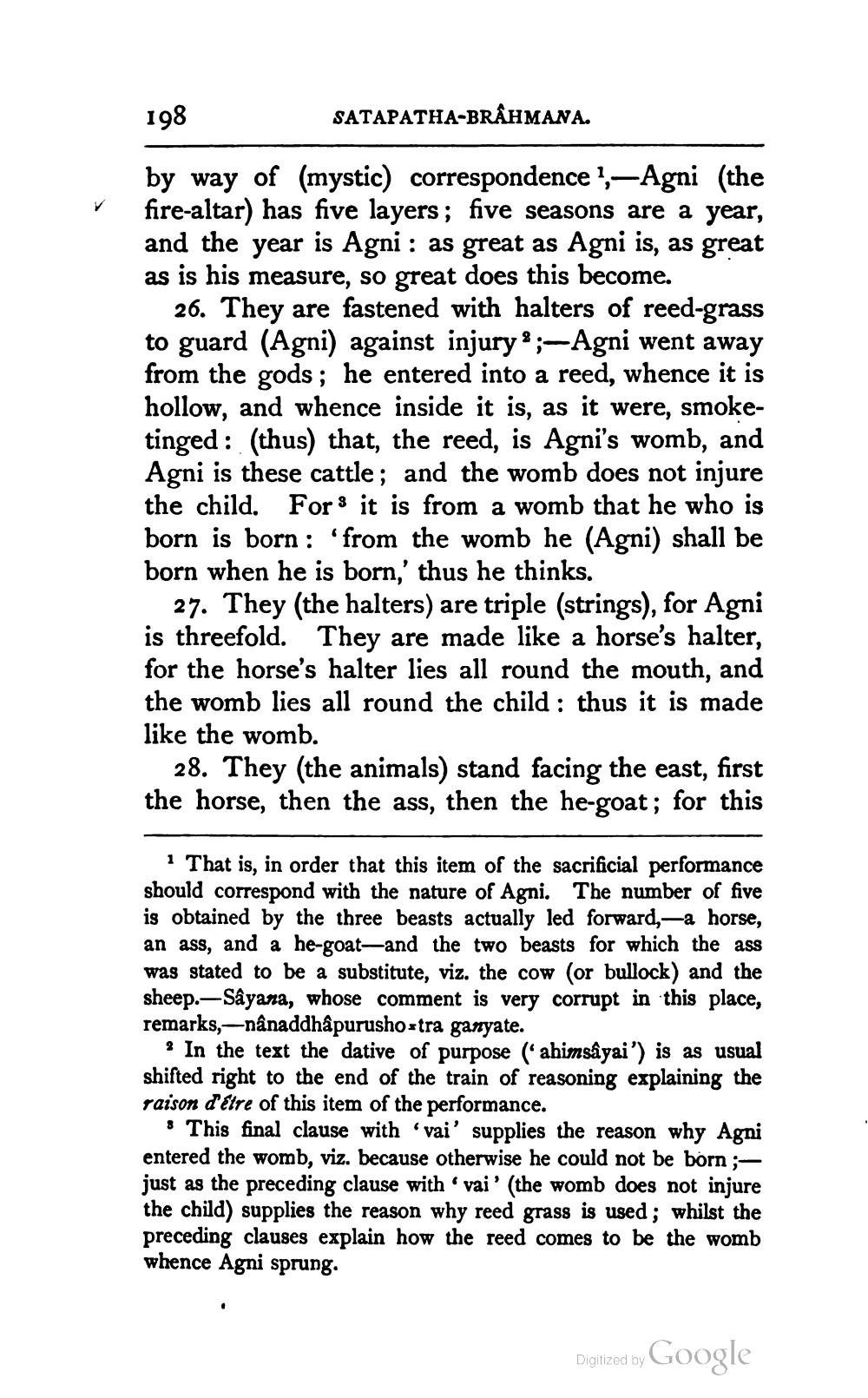________________
198
SATAPATHA-BRÂHMANA.
by way of (mystic) correspondence ?,-Agni (the fire-altar) has five layers; five seasons are a year, and the year is Agni : as great as Agni is, as great as is his measure, so great does this become.
26. They are fastened with halters of reed-grass to guard (Agni) against injury? ;-Agni went away from the gods; he entered into a reed, whence it is hollow, and whence inside it is, as it were, smoketinged: (thus) that, the reed, is Agni's womb, and Agni is these cattle; and the womb does not injure the child. For S it is from a womb that he who is born is born : ‘from the womb he (Agni) shall be born when he is born,' thus he thinks.
27. They (the halters) are triple (strings), for Agni is threefold. They are made like a horse's halter, for the horse's halter lies all round the mouth, and the womb lies all round the child : thus it is made like the womb.
28. They (the animals) stand facing the east, first the horse, then the ass, then the he-goat; for this
That is, in order that this item of the sacrificial performance should correspond with the nature of Agni. The number of five is obtained by the three beasts actually led forward,-a horse, an ass, and a he-goat—and the two beasts for which the ass was stated to be a substitute, viz. the cow (or bullock) and the sheep.-Sâyana, whose comment is very corrupt in this place, remarks,-nânaddhåpurushoxtra ganyate.
3 In the text the dative of purpose ( ahimsayai') is as usual shifted right to the end of the train of reasoning explaining the raison d'Etre of this item of the performance.
: This final clause with "vai' supplies the reason why Agni entered the womb, viz. because otherwise he could not be born ;just as the preceding clause with 'vai' (the womb does not injure the child) supplies the reason why reed grass is used; whilst the preceding clauses explain how the reed comes to be the womb whence Agni sprung.
Digitized by Google




